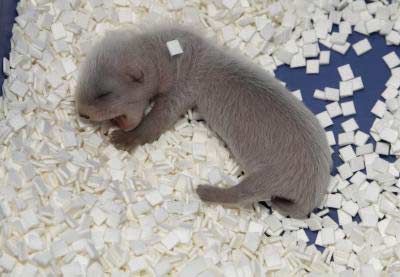Dead For Years, Ferrets Finally Become Fathers

Black-footed ferrets at the Smithsonian's National Zoo have birthed two kits sired by males who died in 1999 and 2000.
These endangered ferrets were artificially inseminated in May with frozen semen from the two dead males, each giving birth to a kit in June, officials at the zoo announced today.
Three other black-footed ferret kits have been born using this method.
The black-footed ferret is one of the most endangered animals in the world. The ferrets were said in 2006 to be making a comeback, but they continue to struggle.
Once inhabiting the grasslands of the western Great Plains, the black-footed ferret population declined with the loss of the North American prairie ecosystem, the zoo scientists explained. Prairie dogs are the ferret's primary prey, and only 2 percent of the original prairie dog habitat remains today.
A recent outbreak of sylvatic plague (also known as bubonic plague) in a prairie dog population in South Dakota also threatens to decimate ferret populations there.
For more than 10 years, the semen was cryopreserved, or frozen, in the Zoo's Black-Footed Ferret Genome Resource Bank, a repository of frozen semen from the most valuable males. The bank's contents help maintain and even enhance genetic diversity by infusing new genes into the population. A genetically healthy and diverse population has a greater chance of survival in the wild. The sperm samples were collected and frozen in 1997 and 1998.
Sign up for the Live Science daily newsletter now
Get the world’s most fascinating discoveries delivered straight to your inbox.
The bank also serves as insurance against catastrophes in the wild populations, such as a disease outbreak.












